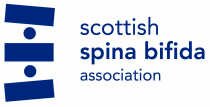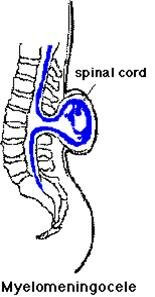 |
 |
 |
|||
| Home | Search | Site Map | Links | Contact Us |
![[Submenu]](images/trirightb.gif) About SSBA About SSBA
|
![[Submenu]](images/trirightb.gif) News for SSBA Users News for SSBA Users
|
![[Submenu]](images/trirightb.gif) The New Family Support Centre The New Family Support Centre
|
![[Submenu]](images/trirightb.gif) Spina Bifida Spina Bifida
|
![[Submenu]](images/trirightb.gif) Hydrocephalus Hydrocephalus
|
![[Submenu]](images/trirightb.gif) Support Available Support Available
|
![[Submenu]](images/trirightb.gif) Questions & Answers Questions & Answers
|
![[Submenu]](images/trirightb.gif) Folic Acid Folic Acid
|
![[Submenu]](images/trirightb.gif) Holidays Holidays
|
![[Submenu]](images/trirightb.gif) Fundraising Fundraising
|
![[Submenu]](images/trirightb.gif) Library Library
|
![[Submenu]](images/trirightb.gif) Current Vacancies Current Vacancies
|
| Feedback |
 Comments Comments |
 |
| Powered By : |
 |
| Spina Bifida>>Types of Spina Bifida (Continued 2) |
Types of Spina Bifida (Continued)
3. Myelomeningocele (also known as Meningomyelocele)
HydrocephalusMost babies born with with Spina Bifida also have Hydrocephalus (from the Greek hydro=water and cephalie=brain). This is an accumulation of cerebrospinal fluid which arises from an inbalance in the production and drainage of fluid.
A separate fact sheet is available on this condition in the library.
Other forms of Neural Tube DefectsEncephalocele
Anencephaly
|
 |
|
 |
|
 |
|
 |
|

|
| Copyright 2005 Scottish Spina Bifida Asscoiation - Privacy Policy - Disclaimer |
 Myelomeningocele is the most serious and more common of the two forms of cystic Spina Bifida. Here the cyst not only contains tissue and cerebro-spinal fluid but also nerves and part of the spinal cord. The spinal cord is damaged or not properly developed. As a result, there is always some paralysis and loss of sensation below the damaged region. The amount of disability depends very much on where the Spina Bifida is and the amount of nerve damage involved. Many people with this condition have bowel and bladder problems because of damage to the nerves going to the bowel or bladder from the bottom end of the spinal cord.
Myelomeningocele is the most serious and more common of the two forms of cystic Spina Bifida. Here the cyst not only contains tissue and cerebro-spinal fluid but also nerves and part of the spinal cord. The spinal cord is damaged or not properly developed. As a result, there is always some paralysis and loss of sensation below the damaged region. The amount of disability depends very much on where the Spina Bifida is and the amount of nerve damage involved. Many people with this condition have bowel and bladder problems because of damage to the nerves going to the bowel or bladder from the bottom end of the spinal cord.